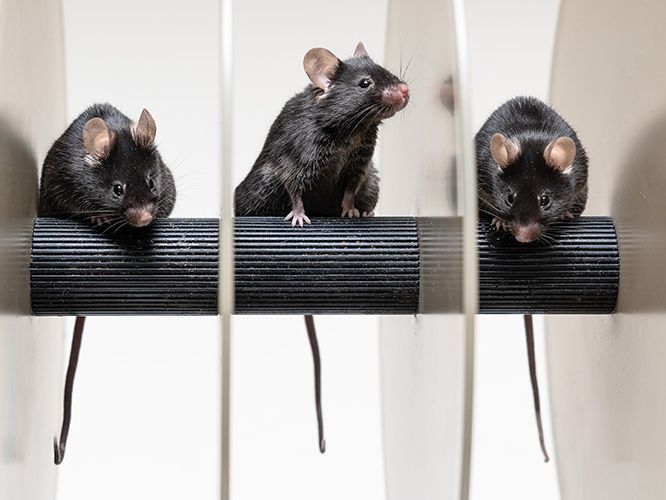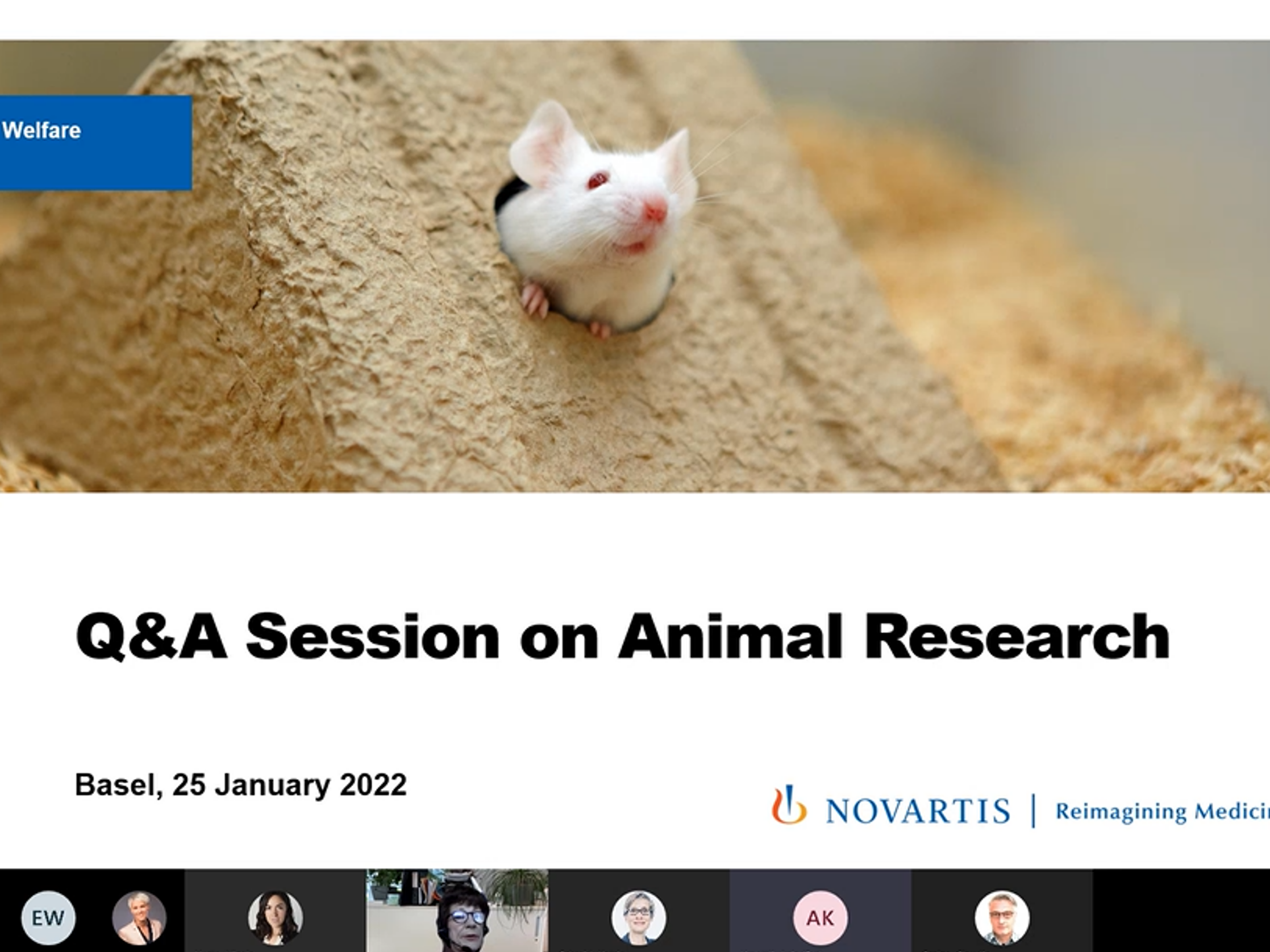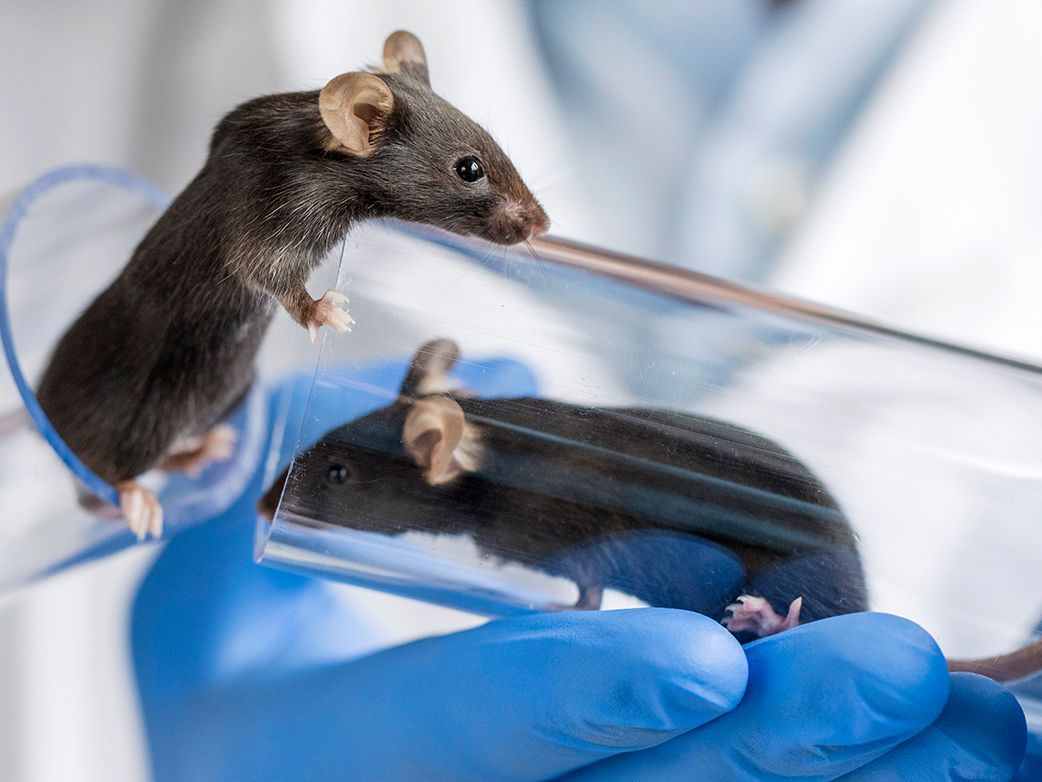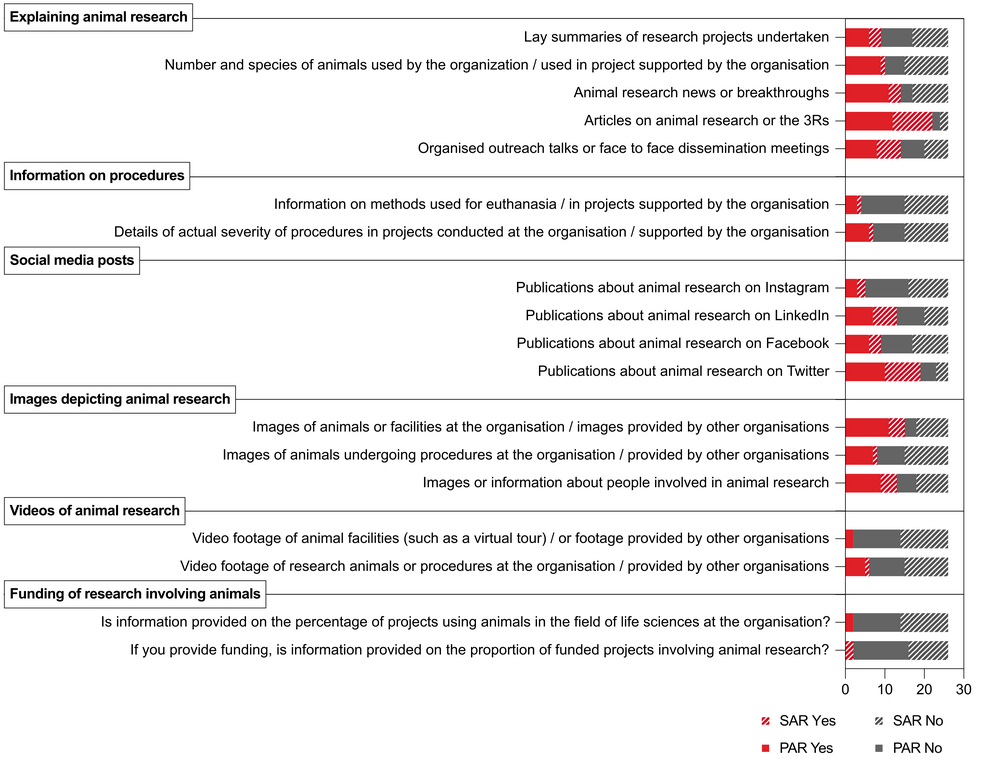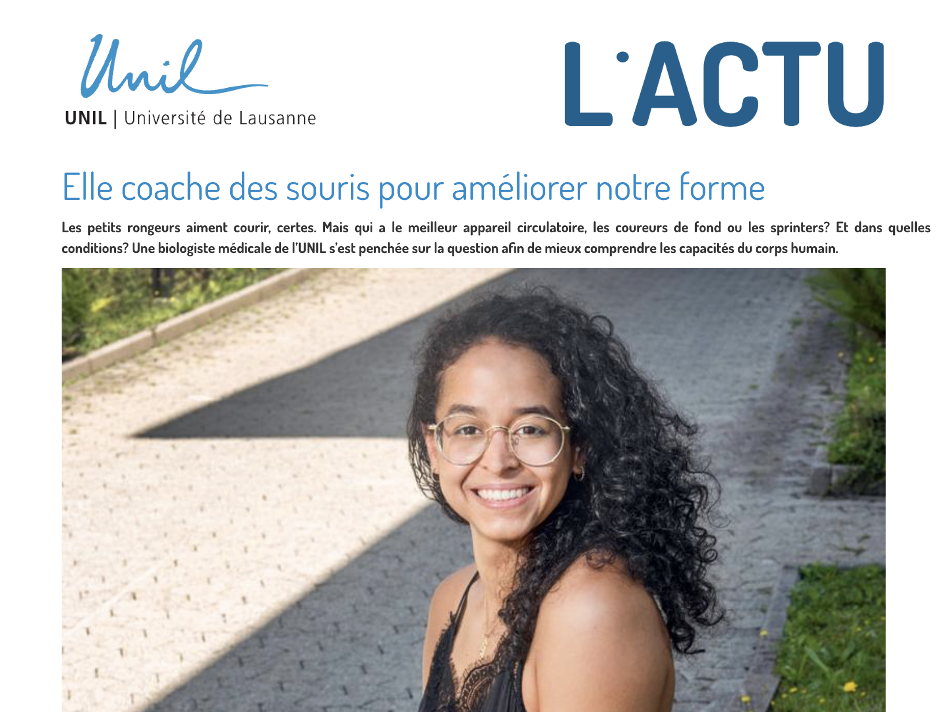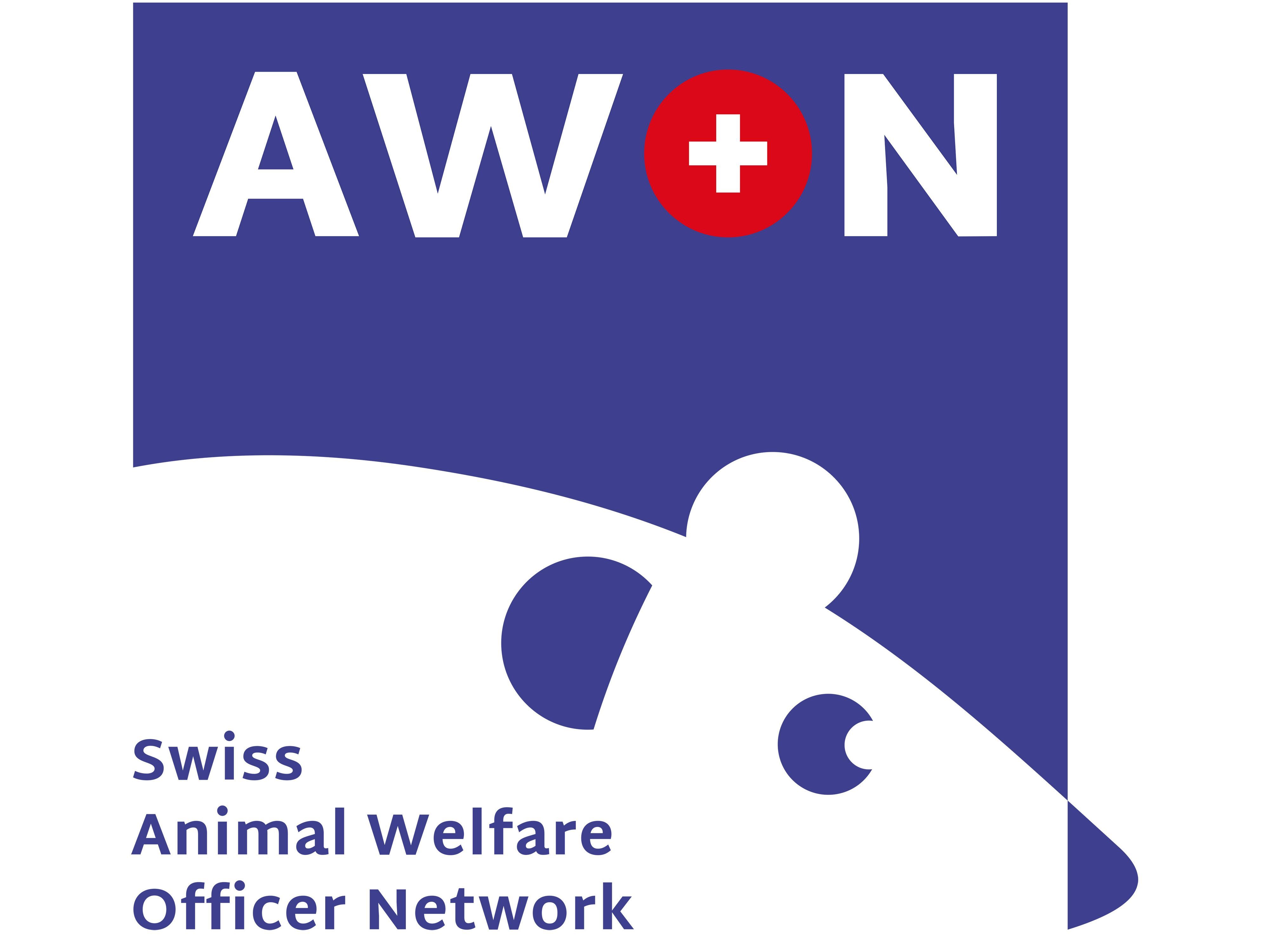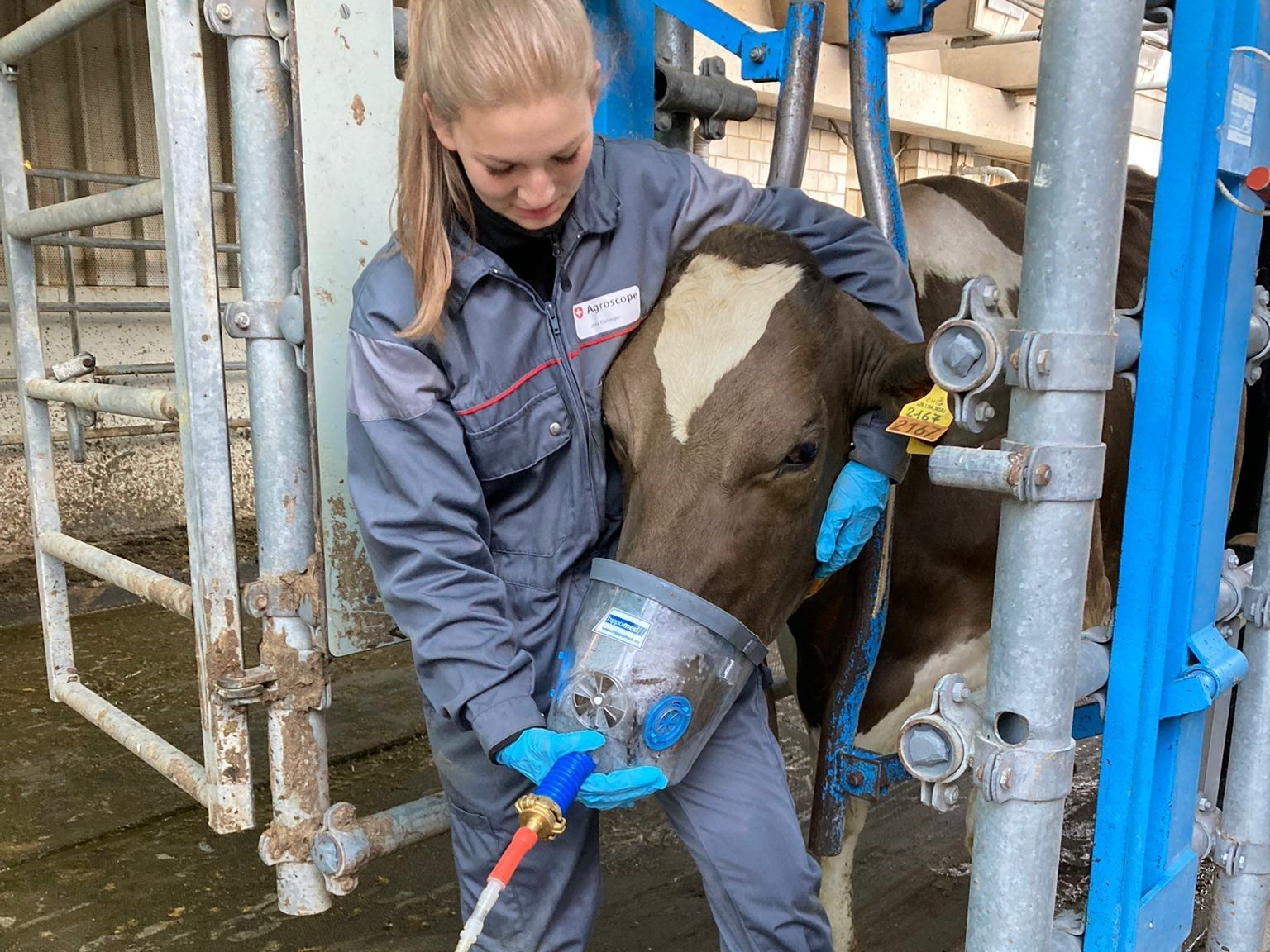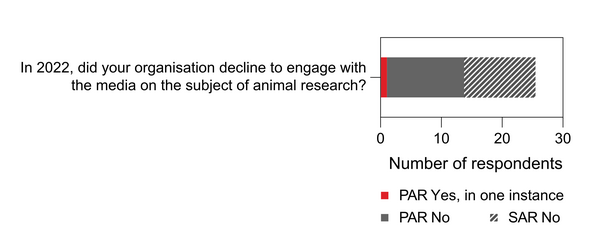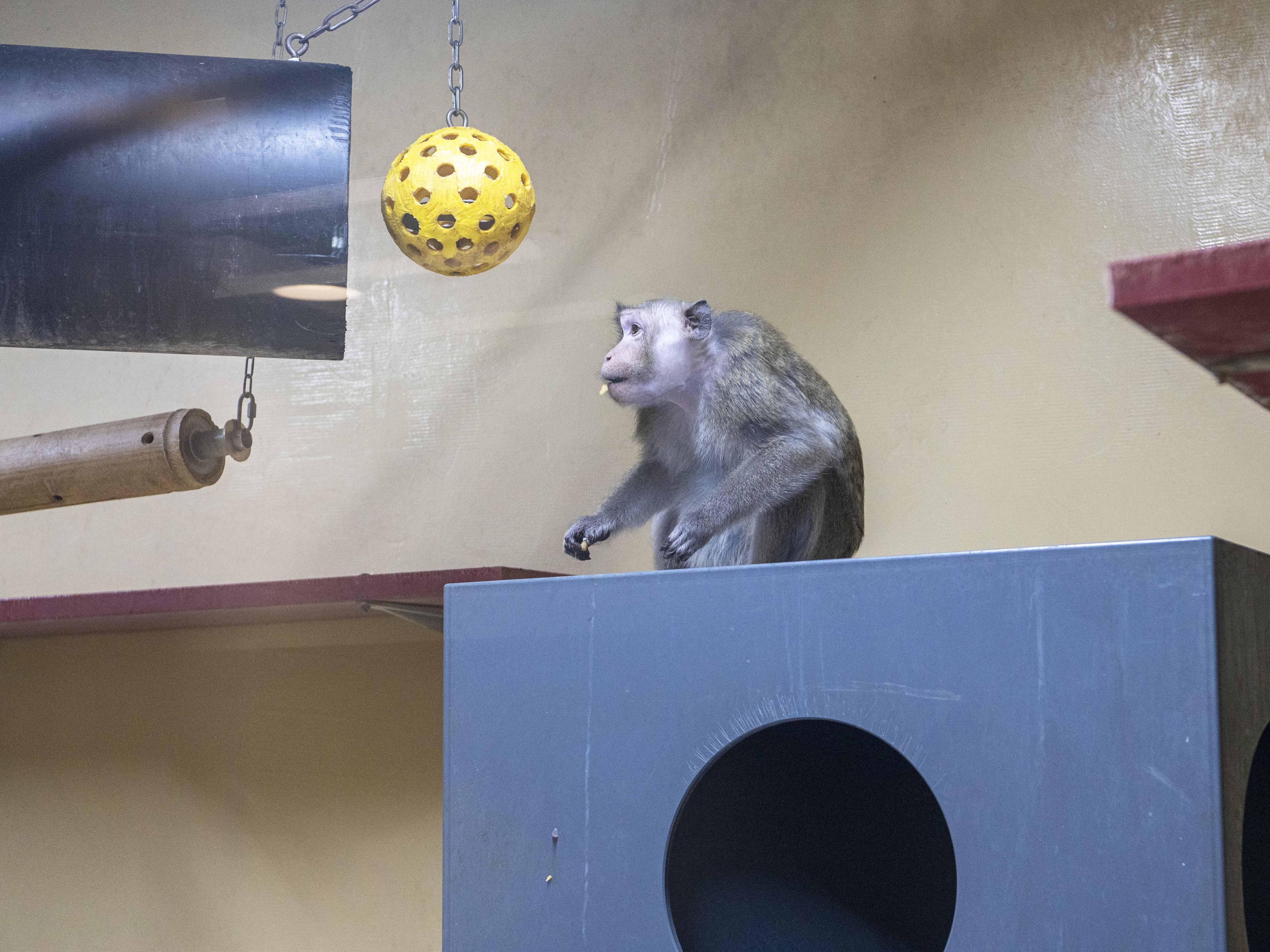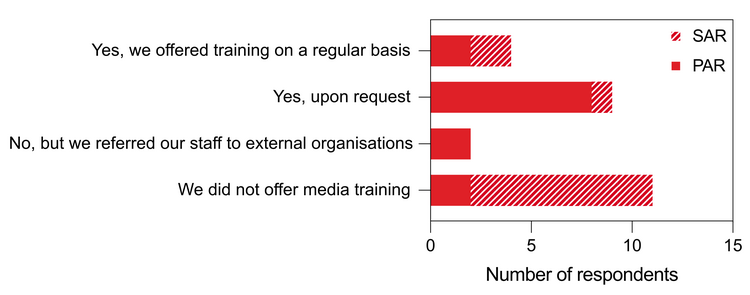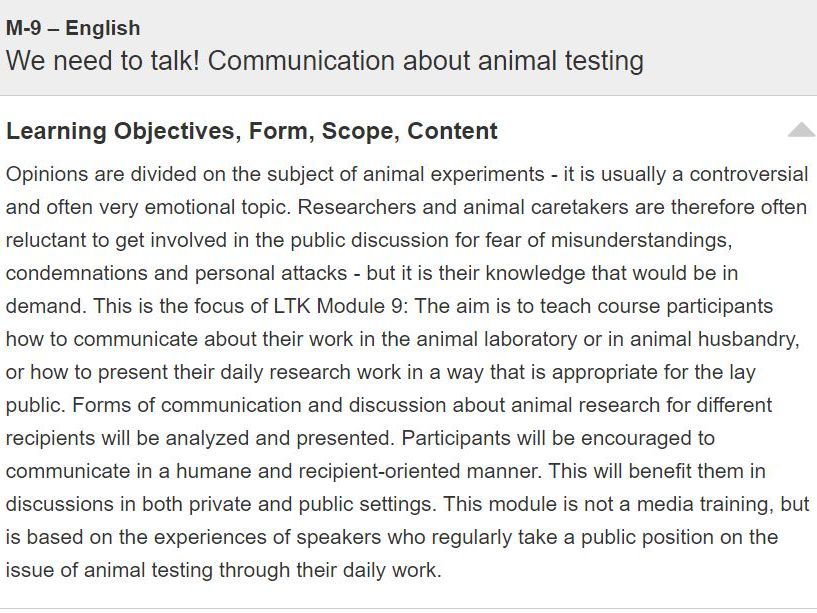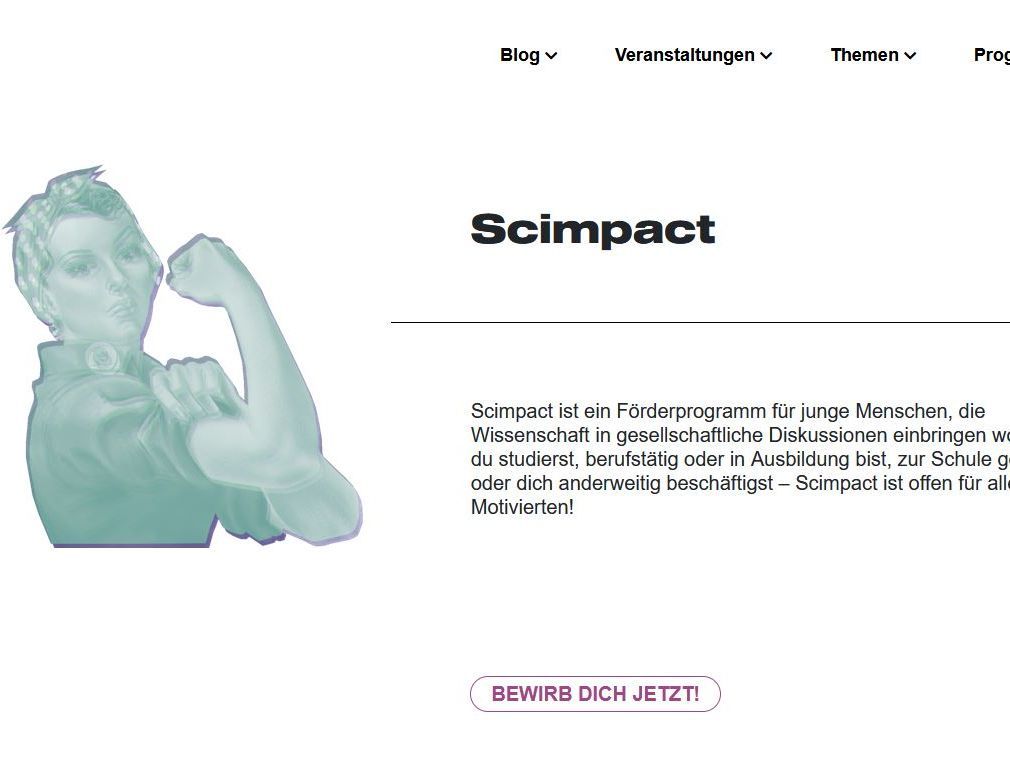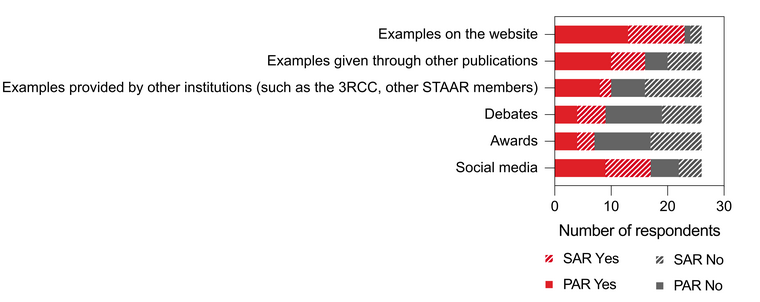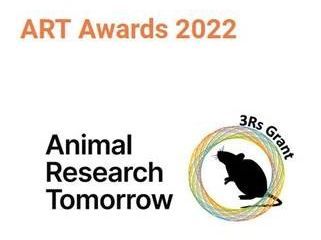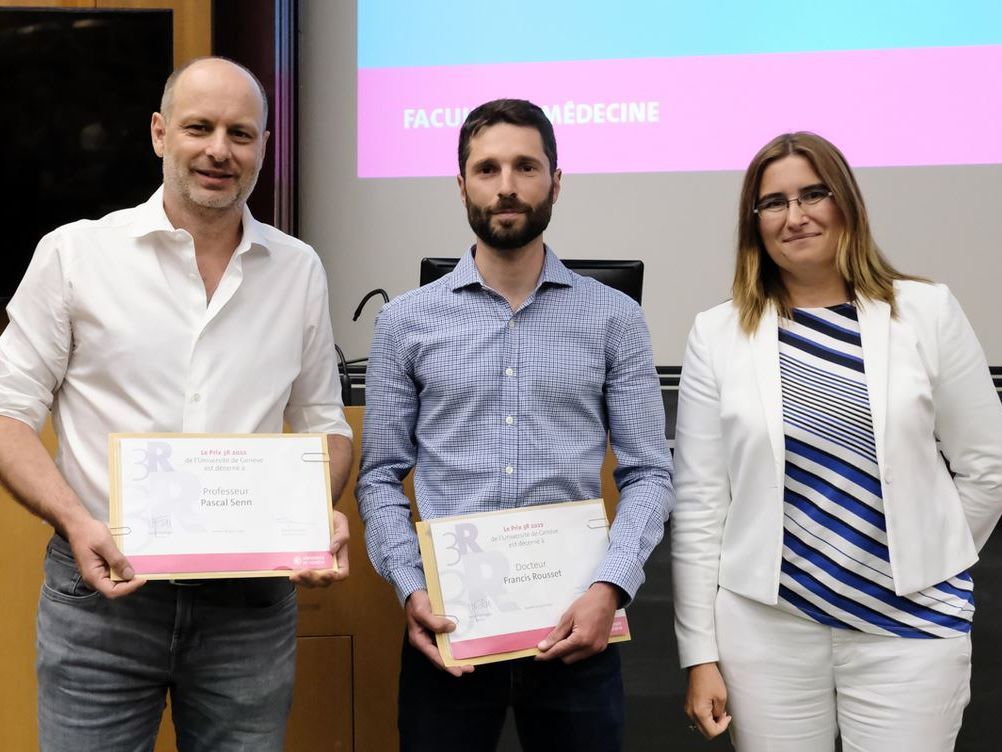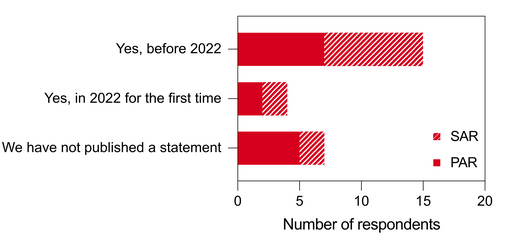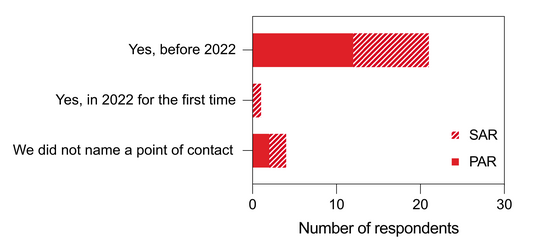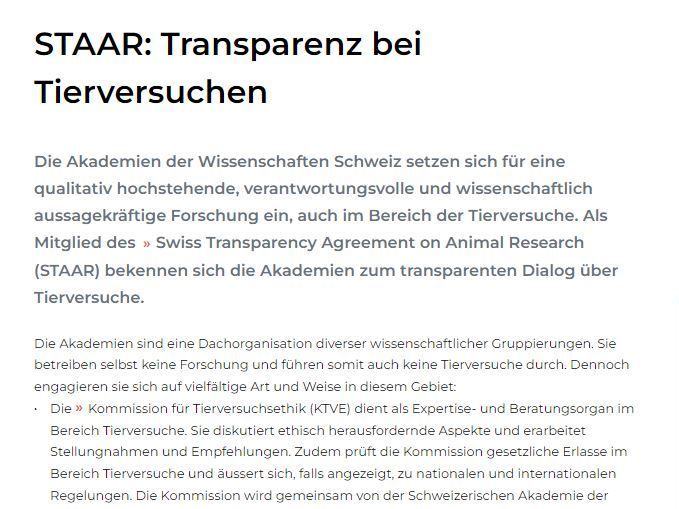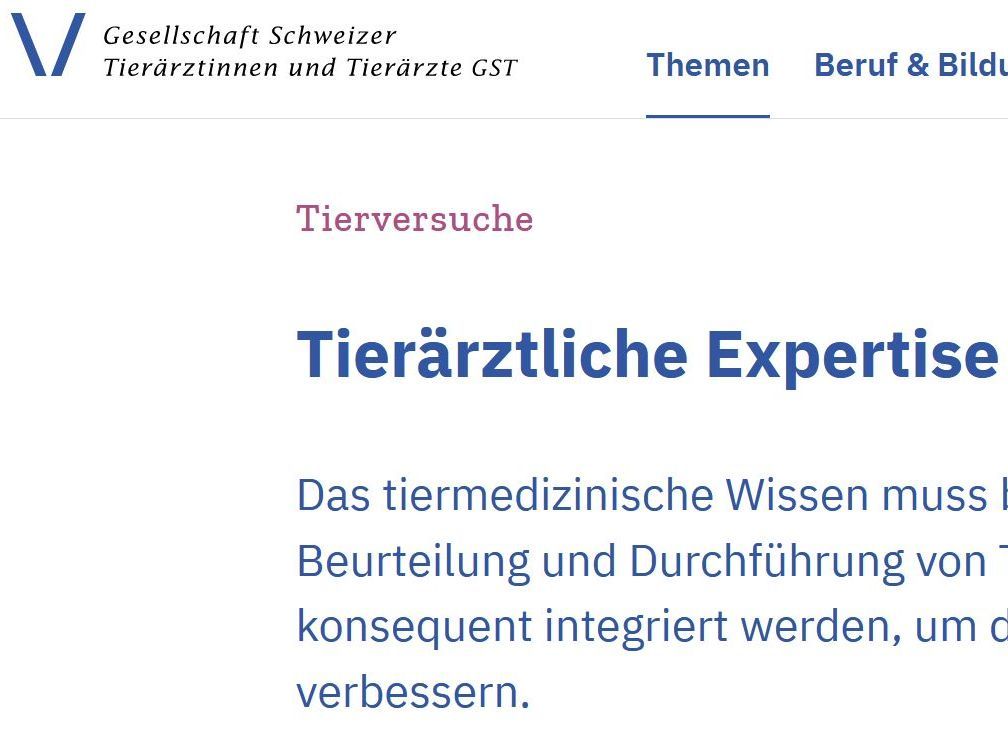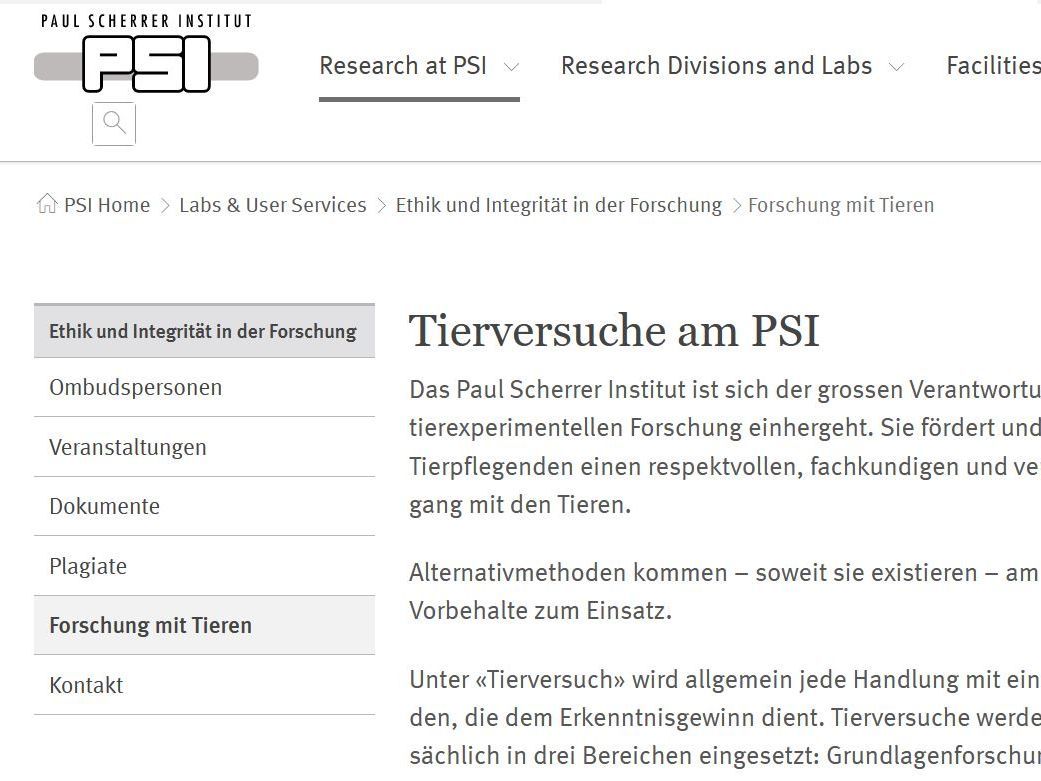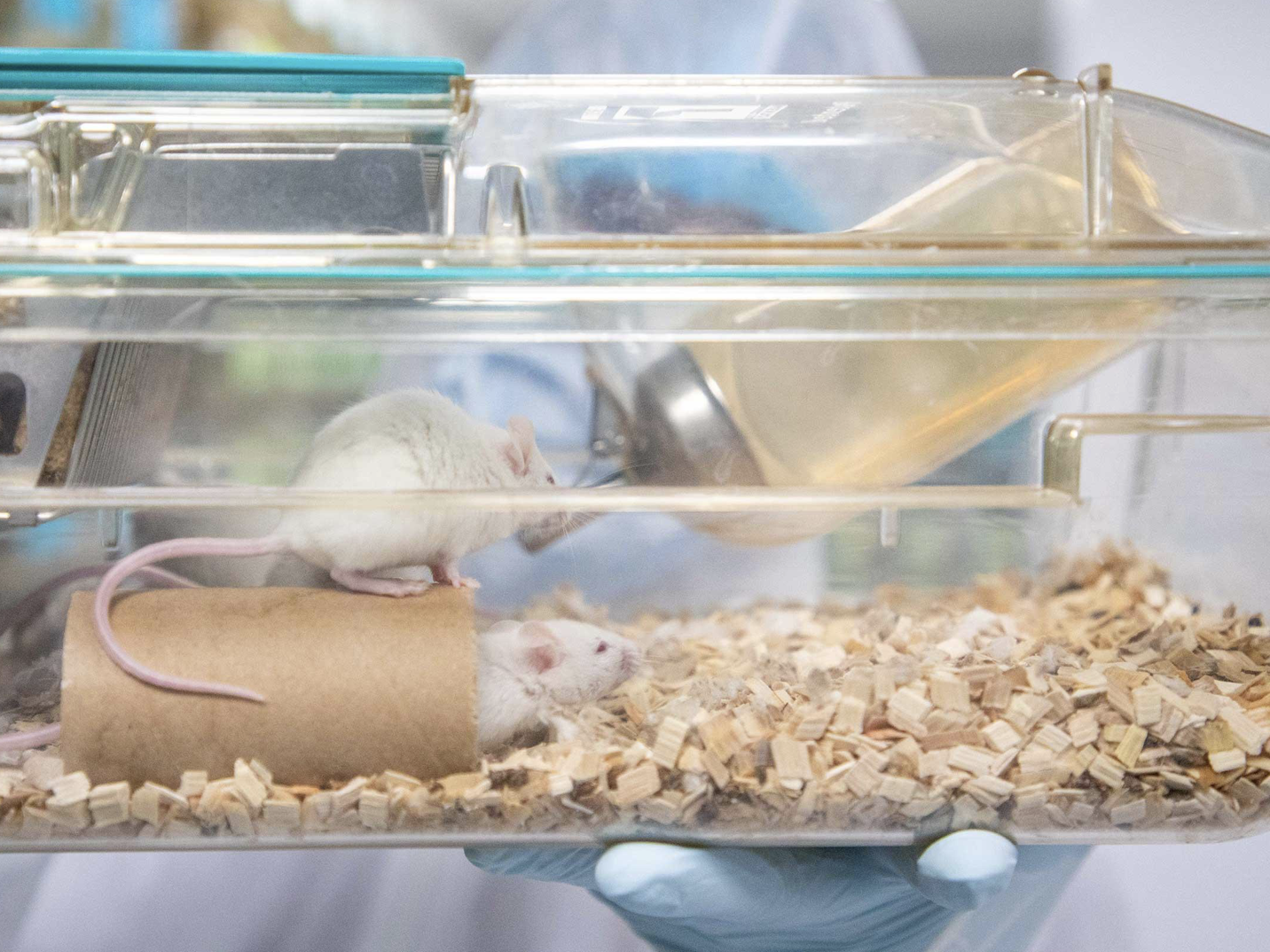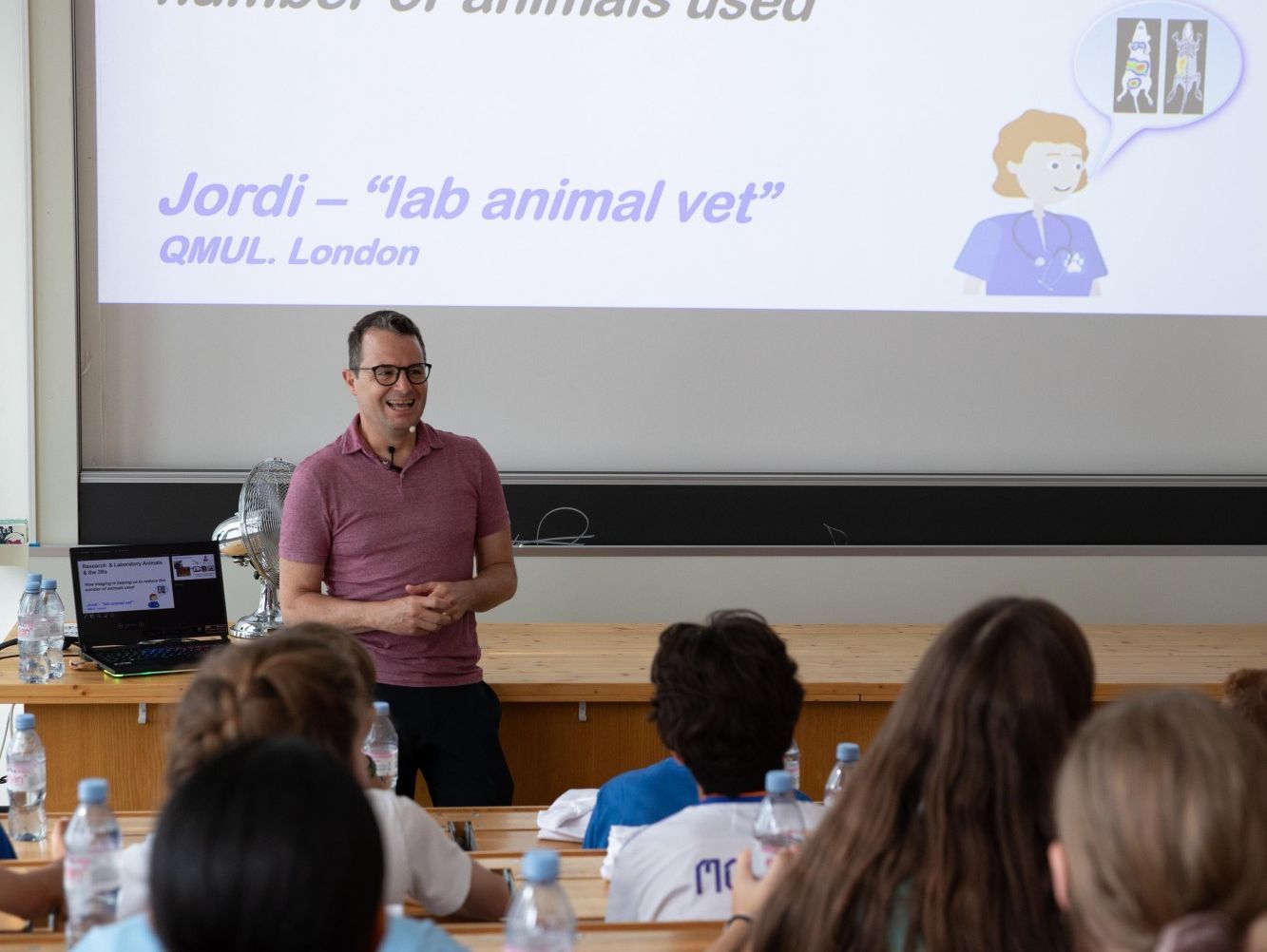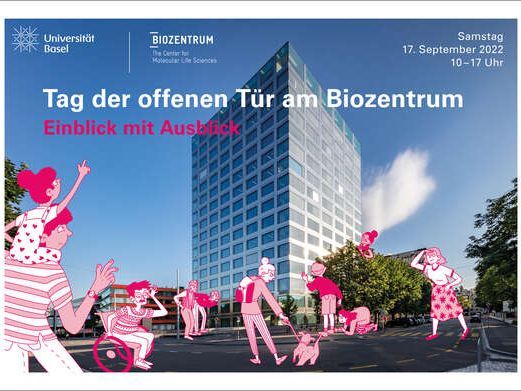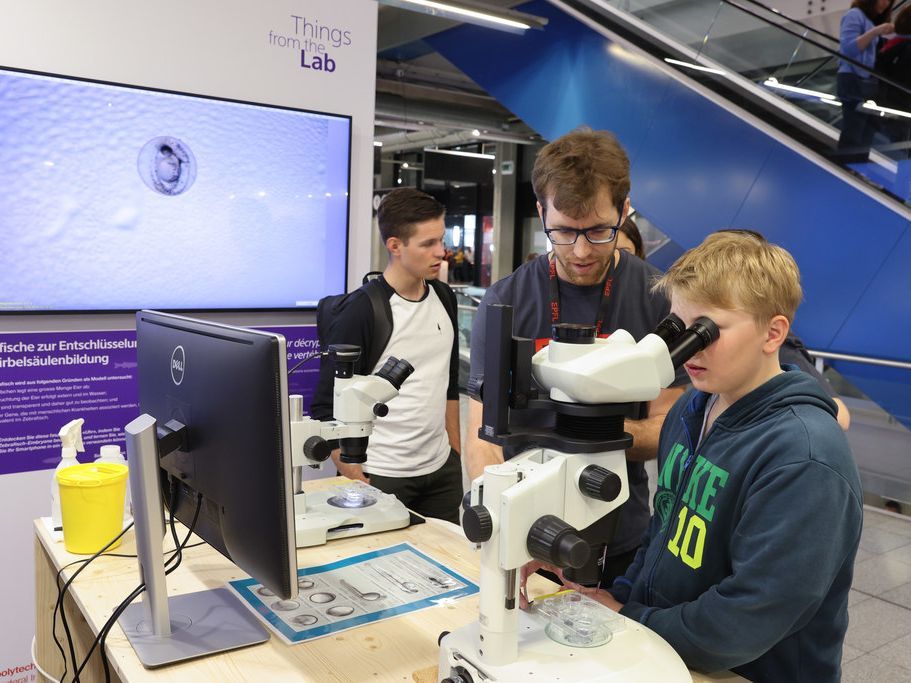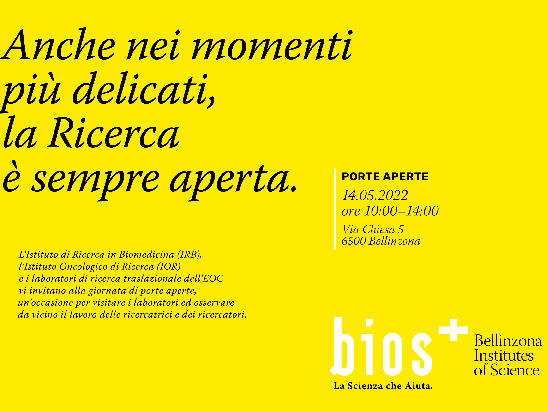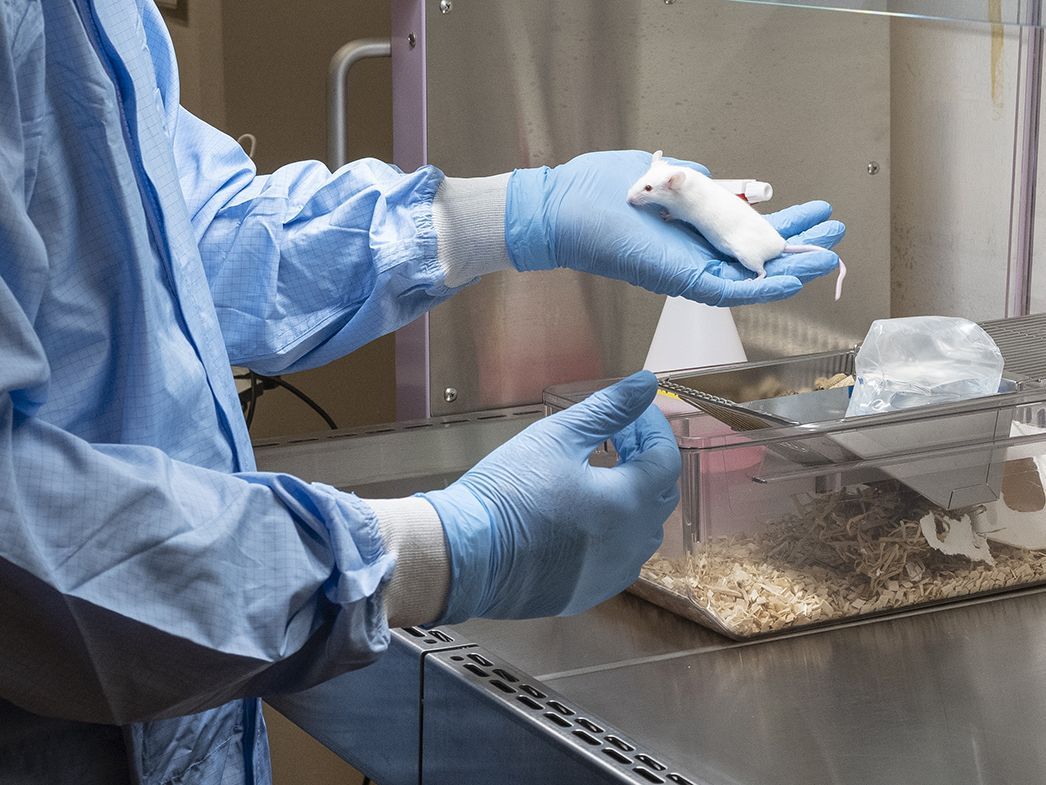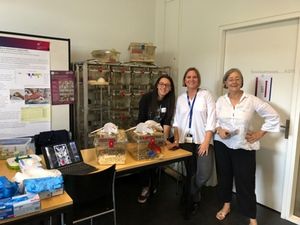STAAR 2022 Annual report
Main Content
Executive summary
The Swiss Transparency Agreement on Animal Research (STAAR) was launched in 2022 to increase transparency on the use of animals for research. The 26 signatory organisations to STAAR agreed to openly communicate about their use of animals or their support of animal research, promote discourse with the public and the media, provide opportunities for the public to learn about animal research, and report on their progress in practising transparency. In addition to these four commitments, four initial objectives were adopted for 2022–2023: the STAAR standards.
This inaugural annual report provides information on the transparency activities conducted in 2022 by the 26 STAAR signatories, 14 of which perform animal research (in the following: PARs) and 12 of which support the use of animal research (in the following: SARs). The report is based on the responses of the signatory organisations (in the following: members) to a questionnaire prepared by a working group of the umbrella organisation swissuniversities. The survey results are supplemented with examples of activities conducted by the members in the interest of inspiring yet more transparency.
Highlights:
- 64 percent (9/14) of the PARs published information on the number and species of animals used, while 8 percent (1/12) of the SARs published information on the number and species of animals used in the projects they supported.
- 86 percent (12/14) of the PARs organised at least one tour of their animal facilities for staff not working with animals.
- All organisations responded to any media requests made, in the form of statements, for example (64 percent of the PARs and 58 percent of the SARs).
- In 2022, most PARs published images on animal research featuring animals in facilities (79 percent, 11/14), people (64 percent, 9/14), and procedures (50 percent, 7/14); however, videos were not common. This pattern is also observed among the SARs, with images being more common than videos.
- 43 percent (6/14) of the PARs provided details on the severity of procedures.
- Communication with the public was conducted in the form of articles on animal research or the 3Rs (86 percent of the PARs and 83 percent of the SARs) as well as outreach talks or face-to-face meetings (57 percent of the PARs and 50 percent of the SARs). Most PARs (79 percent, 11/14) published animal research news or information on breakthroughs, in contrast to only 25 percent (3/12) of the SARs. The social media channels Twitter (now X) and LinkedIn were preferred over Facebook and Instagram.
- Most PARs organised media training for staff or referred staff to external organisations providing training (84 percent,12/14). This practice was not common among the SARs.
- The majority of organisations communicated transparently on their efforts to promote and advance the 3Rs via various channels: examples of implemented 3Rs methods were published on websites (93 percent of the PARs and 83 percent of the SARs), in other publications (71 percent of the PARs and 50 percent of the SARs), and on social media (64 percent of the PARs and 67 percent of the SARs). 3R awards were given by 29 percent of the PARs (4/14) and 25 percent of the SARs (3/12).
- Most organisations (93 percent of the PARs and 67 percent of the SARs) engaged with local communities and schools by organising or supporting events for the public. Two PARs organised events designed specifically for patients.
- Respondents named the following barriers to achieving the STAAR commitments and communicating more proactively: limited staff and funding, lack of technical expertise, limited coordination between communication offices and departments performing animal research, and limited information provided by grantees.
Animal research in Switzerland
Switzerland is a leader in the pharmaceutical and biotechnology industries and has a strong tradition in basic research, with an extensive network of institutions in academia and industry active in the life sciences. To maintain and further develop this leadership position, whether in highly specialised education, medical care, or innovation capacity, Switzerland relies on cutting-edge and responsible research, which may require the use of animals. Indeed, research with animals remains essential today for progress and innovation in many fields, and results from animal research benefit human and animal health and well-being, nature conservation as well as our understanding of life processes.
When addressing a scientific question, all researchers work by choosing the most relevant model, or combination of models, to answer the question. While in silico or in vitro models (in silico means to study and predict the behaviour of a part of the organism by computer modelling; in vitro means to study a part of an organism by means of cell cultures, for example) are preferred wherever possible for ethical, legal, and economic reasons, the use of in vivo models (in vivo means to study a living, complete, and autonomous organism in all the complexity of its functioning) remains necessary, especially when the aim is to understand interactions between different organs and in the case of animal conservation and veterinary science studies.
The use of animals for experimentation has evolved considerably over the last 40 years, with a marked increase in genetically modified animals since the mid-1990s (particularly mice, rats, and zebrafish). In parallel, since the mid-1970s, the Swiss population has developed a greater sensitivity to issues surrounding animal welfare. Various laws have been adopted in Switzerland to respond to societal expectations and concerns, starting with the federal Animal Welfare Act in 1974 and followed by the first Animal Protection Ordinance in 1981. The legal framework also covers the use of animals for research purposes. These regulations have undergone several amendments since then, including the introduction of the obligation to appoint an animal welfare officer at each institution that perform animal experiments.
Authorization process
Animal experimentation in Switzerland is underpinned by three key pillars: authorisation, training, and inspection. The multi-level authorisation process is described in Figure 1. With regard to education programmes, researchers, study directors and animal caretakers must comply with requirements in basic and continuing education at all times. Lastly, cantonal authorities are obliged to conduct an annual inspection of all animal facilities and at least 20 percent of the authorised animal experiments.

Following the enactment of the Animal Protection Ordinance, the 3R Research Foundation was created in 1987 to promote the “Three Rs” (3Rs) in animal research. The 3Rs stand for Replacement, Reduction, and Refinement. The Swiss 3R Competence Centre (3RCC) was established in 2018 as a joint initiative by academia, industry, regulatory bodies, the government, and animal welfare associations. The founders of the 3R principle, William Russel and Rex Burch, introduced their proposal in 1959 with the aim of protecting animals used in research. The 3R principle has since then established itself worldwide as the foundation of an ethical approach to animal testing and is an integral part of today’s Swiss research landscape. For each experiment using animals, researchers must verify there is no viable replacement and ensure that the number of animals used is kept to a minimum; moreover, procedures must be refined not only to avoid or minimise pain, distress, and other adverse effects, but also to enhance animal well-being. The 3R principle formed the basis for the Swiss legal framework regulating animal experimentation.
Over the course of the long history of using animals in research, Swiss society has become more protective of animals and more sensitive towards their welfare; at the same time, the lack of transparency and proactive communication through the research community has led to one-sided information about how and why animal research is carried out. Because the Swiss political system allows people to express their concerns through popular initiatives, one result of this lopsided information status is that several initiatives against animal experimentation have been submitted since 1985, all of which, however, have been rejected at the ballot box. Nevertheless, they have contributed to a cultural shift marked by improved interactions and exchanges between researchers and society and have generated greater understanding in the public as well as more careful integration of ethical consideration among researchers.
In 2022, swissuniversities drew up the Swiss Transparency Agreement on Animal Research (STAAR) to sustain and further promote public trust in animal research in Switzerland.
The overall objective of STAAR is to improve communication and transparency regarding the use of animals in research, with its members committing to openness and dialogue with the public. Moreover, STAAR aims to anchor communication on animal experimentation in current practice and to enhance and expand existing coordination measures and networks at the national level. With its specific focus on improving communication in animal research and related efforts, STAAR requires its members to report progress towards greater transparency and identify gaps and setbacks in this process.
Brief history of STAAR
During the campaign on the federal popular initiative for a total ban on animal research,which was rejected by 79.1 percent of the population in February 2022, many Swiss researchers realised there is a need to be more transparent and engage proactively with the public about why and how animal experiments are conducted in Switzerland. To support the concerned institutions in their efforts towards greater transparency and dialogue with the public on the use of animals in research, swissuniversities established the STAAR commission. However, it should be noted that discussions on promoting and coordinating efforts to increase transparency in animal research were initiated long before STAAR. The creation of STAAR, then, is seen as part of a drive to improve transparency and pursue engagement with the public that many institutions had already been working on for some time.
In 2019, the association Research for Life (Forschung für Leben), in collaboration with the University of Zurich, initiated the idea of a nationwide transparency agreement on animal research. The project was further developed by the Swiss Academies of Arts and Sciences before being transferred to swissuniversities. Taking inspiration from the transparency agreements existing in several European countries, two workshops were held in 2021, and intensive discussions within a swissuniversities working group led to drafting a concept for STAAR under the umbrella of swissuniversities, which was then drawn up and adopted by the Chamber of Universities of swissuniversities in November 2021. Since then, STAAR has been instituted as a commission of the Chamber of Universities of swissuniversities.
STAAR unites public and private organisations that either perform animal research (PARs, e.g. public research centres, industry) or support animal research (SARs, e.g. animal welfare organisations, funding agencies). The activities of STAAR are planned and executed by two bodies: the Plenary Assembly, composed of the representatives of all members of STAAR, and a Working Group, consisting of nine members in 2022. One member is designated as the lead institution and represents STAAR at the national level.
In 2022, the following 26 institutions (14 PARs and 12 SARs) were members of STAAR, with the University of Zurich acting as lead institution:
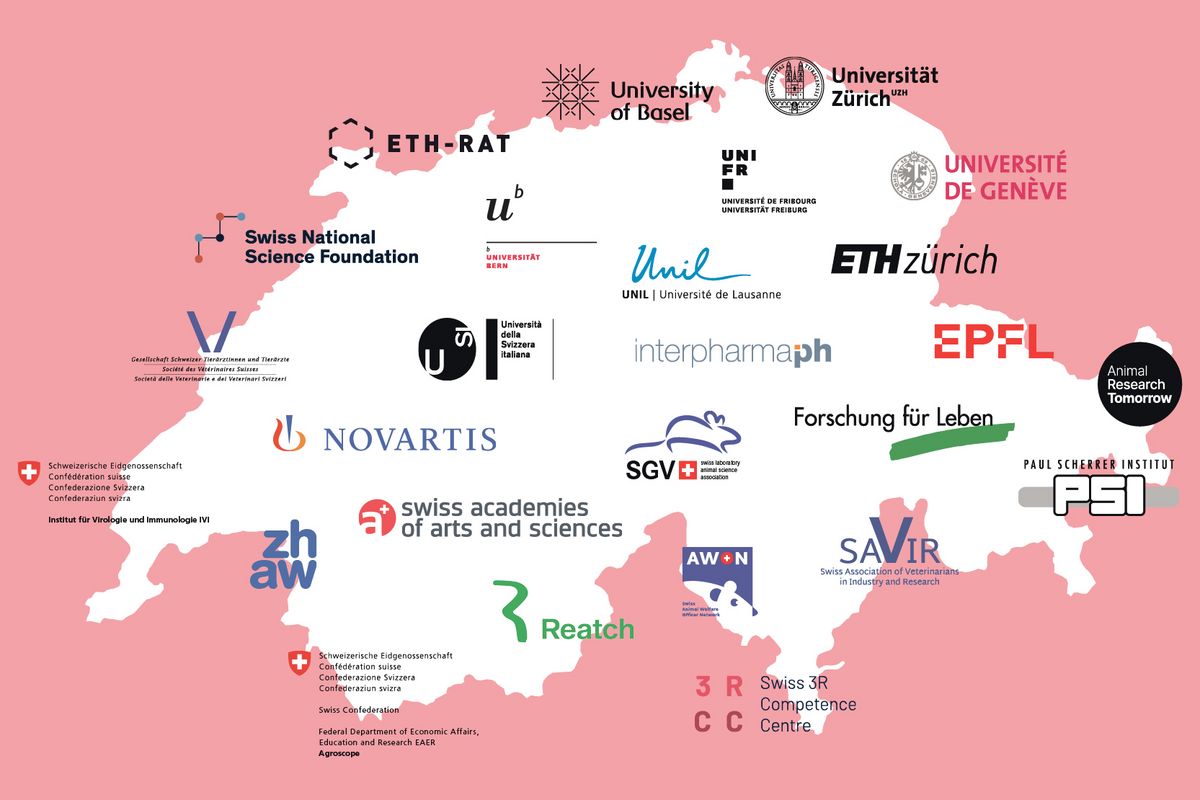
List of PAR institutions
- University of Fribourg
- University of Geneva
- University of Basel
- Novartis International AG
- Zurich university of applied sciences (ZHAW)
- Swiss Federal Institute of Technology in Zurich (ETH Zurich)
- Swiss Federal Institute of Technology in Lausanne (EPFL)
- University of Bern
- University of Zürich
- Agroscope
- University of Lausanne
- Università della Svizzera italiana (USI)
- Paul Scherrer Institut
- Institute of Virology and Immunology
List of SAR institutions
- Animal Research Tomorrow
- Swiss Laboratory Animal Research Association (SGV)
- Reatch! Research. Think. Change.
- Swiss Academies of Arts and Sciences
- Research for Life
- Interpharma
- Swiss Association of Veterinarians in Industry and Research (SAVIR)
- Gesellschaft Schweizer Tierärztinnen und Tierärzte
- Swiss 3R Competence Centre
- Swiss Animal Welfare Officer Network (AWO-N)
- Swiss National Science Foundation (SNSF)
- ETH Board
Commitment 1: We will be clear about how and why we use or support the use of animals in research.
This Commitment seeks to ensure that all organisations communicate and are transparent about their use, or support for the use, of animals in research, both internally and externally. All signatories agree to these basic principles of openness, which underpin the entire transparency agreement.
Commitment 2: We will enhance our communication with the public and the media about our involvement with research using animals.
The purpose of this Commitment is to ensure that relevant details about signatories’ involvement in the use of animals in research are made readily available to the public. It builds on Commitment 1 by outlining some of the steps that organisations can take to facilitate their communication about animal research.
Commitment 3: We will be proactive in providing opportunities for the public to find out about our involvement with research using animals.
This Commitment aims to facilitate informed public discourse in Switzerland about animal research. It builds on Commitments 1 and 2 by suggesting ways in which signatories can engage proactively with the public, above and beyond the provision of information.
Commitment 4: We will report on progress annually and share our experiences.
Monitoring the implementation of the transparency agreement is critical for its success. The aim of this Commitment is to document and communicate the progress signatories have made towards being more open about research using animals in Switzerland and improving the information that is available to the public.
A list of specific objectives derived from the four commitments is also defined each year by the Plenary Assembly. These specific objectives comprise more concrete actions that the signatories agree to pursue and implement. It is expected that the objectives will evolve over time and thus change. The following objectives (the so-called “STAAR Standards”) were adopted for 2022 until mid-2023:
Policy statement
Signatories acknowledge their involvement with research using animals by adding a policy statement on their website, including a commitment to advancing the implementation of the 3Rs. The policy statement is signed by the responsible of the domain of animal experimentation in the institution.
Openness about animal experimentation
Signatories work towards providing comprehensible explanations of animal research projects and procedures and information about the statistics of animal experimentation in their institution. In this regard, signatories work towards making publicly available:
- Images and, if possible, videos from their institutions,
- Figures of animal use specific to their institutions,
- The mention of the use of animal research in press releases reporting important new research findings.
Annual report 2022
Purpose and methodology
The basis of the STAAR annual report is a questionnaire sent to all members. This survey is shaped to monitor communication and transparency in and around animal use by the STAAR signatories. By openly reporting on responsible practices in the survey, all members recognise the importance of transparency and communication, while also practising accountability, and fostering public trust. The survey also advances the ongoing enhancement of transparency regarding animal research and welfare practices within STAAR institutions.
The STAAR questionnaire developed by the working group is based on surveys by the European Animal Research Association, the body that initially proposed introducing transparency agreements. A preliminary survey was conducted among signatories to gather pre-STAAR data; subsequently, and based on member feedback, the questionnaire was revised. In April 2023, the final survey was sent to all signatories for the purpose of compiling the inaugural, 2022 STAAR annual report, with preliminary results shared at the STAAR General Assembly in June 2023. The Chamber of Universities of swissuniversities approved the final report on 29 November 2023.
Focus on 2022 Standards
1st standard: Policy statement
50 percent (7/14) of the PARs and 67 percent (8/12) of the SARs had published a policy statement on animal research already before 2022. Four members published a statement for the first time in 2022. Five PARs and two SARs did not achieve this aim in 2022; most of these are preparing a statement to be published in 2023.
2nd standard: Contact person
Most members (81 percent, 21/26) had named a contact person for inquiries about animal research already before 2022, and one additional member designated a point of contact in 2022. Two PARs and two SARs did not appoint a contact person by the end of 2022.
3rd standard: Openness about animal experimentation
Regarding images and videos, most PARs published images illustrating animal research facilities and animals (79 percent, 11/14), people involved in animal research (64 percent, 9/14), and experimental procedures (50 percent, 7/14); videos, by contrast, were not common. This trend is also observed among the SARs, with images being more common than videos.
Regarding the publication of figures on the use of animals, 64 percent (9/14) of the PARs published information on number and species of animals used. In contrast, only one SAR published information on number and species of animals used in projects they supported. (It should be noted that this question does not apply to some SARs active in animal welfare.)
4th standard: Annual report
All signatories provided information for this report.
While staff working with animals are informed about the use of animals at their institution, this is not necessarily the case for employees whose work does not concern animal research; they therefore represent a potential target audience for transparency activities. This question specifically addresses transparency vis-à-vis employees not directly involved in animal research. Informing all employees has a “culture of care” component, as it helps make the work of animal researchers and technicians understood by colleagues. This question does not apply to seven members that are organisations without employees.
The results show that most PAR members communicate about the use of animals by giving presentations on this topic or courses. Sharing via internal newsletters or journals is common among both PAR and SAR members. Concerning visits to the animal facilities, 86% of PAR members organised 2022 at least one tour through the animal facility dedicated to personnel not working with animals.
Less than 50 percent of the SARs organised visits to animal facilities, gave presentations, or invited employees to attend seminars on animal research. These members have no animal facilities and do not provide courses and workshops; these activities would have to be organised in collaboration with external institutions.
Several members make no systematic mention of the use of animal research when recruiting and onboarding staff. Given the large size and the decentralised organisation of some institutions, this information may be deemed irrelevant for many employees (staff at a faculty or department in a field that does not perform animal research).
This question was based on the 3rd STAAR Standard agreed upon by members in 2022.
Most PARs published images of research animals held in facilities in 2022 (79 percent, 11/14), people (64 percent, 9/14)) and procedures (50 percent, 7/14); however, videos were not common. This trend is also observed in SARs, with images being more common than videos.
Although images of experimental procedures with animals were published, only 43 percent of the PARs provided details of the actual severity of procedures, and only 21 percent gave information on methods used for euthanasia; only two SARs provided information on procedures or euthanasia.
Concerning publications on social media, Twitter and LinkedIn were the preferred channels, while less than 50 percent of the PARs and SARs communicated about animal research on Facebook or Instagram. Lay communication was performed via articles on animal research or the 3Rs (86 percent and 83 percent, respectively) and outreach talks or face-to-face meetings (57 percent and 50 percent, respectively). Most PARs (79 percent) and 25 percent of SARs published animal research news or information on breakthroughs.
The publication of statistics on the use of animals is an essential component of the 3rd standard. The FSVO publishes annual statistics on animal research based on data from the cantonal authorities, who collect information from the resource managers at research institutions. Although these data could also be collected within the organisations themselves, only 64 percent of the PARs published information on the number and species of animals used. It seems more difficult for SARs to publish information on number and species of animals used in the projects they support, as this aspect is not systematically documented. Consequently, only one SAR published such information in 2022.
Lastly, the questionnaire asked about the amount of funding allocated to animal research. This is a difficult question to answer, because animal research often constitutes only one aspect of research projects that use both animal and non-animal methods. However, 14 percent of the PARs published the proportion of funded research projects with animal experimentation in all funded life sciences projects (e.g. biology, medicine) at their institutions. In addition, two SARs providing funding also published the proportion of funded animal research projects.
Members reported that they communicated openly about animal research in response to external inquiries, for example from the media (64 percent of PARs and 58 percent of SARs). They also offered opportunities to learn more about animal research by arranging access to animal facilities (64 percent of the PARs), making statement or giving interviews, and contributing to long-form articles (71 percent of PARs and 67 percent of SARs). Proactive statements to the media were less common (46 percent and 50 percent). All members engaged with the media when requested; in a single case, a member was unable to reply to a media request. In some cases, access to animal facilities is restricted due to strict hygiene protocols.
Increasing transparency goes hand in hand with encouraging staff to communicate openly and enabling them to improve their communication skills. Most PARs offered media training or referred staff to external organisations (86 percent). This is not common among SARs, possibly because their employees are not directly involved in animal research.
The 3Rs principle (Replacement, Reduction, Refinement) guides animal research in Switzerland. It is therefore expected that organisations performing animal research, or supporting the use of animals in research, communicate transparently about their efforts to uphold the 3Rs. Most members use various communication channels to do so: examples of implemented 3R methods are presented on websites (93 percent of the PARs and 83 percent of the SARs), in publications (71 percent of the PARs and 50 percent of the SARs) and on social media (64 percent of the PARs and 67 percent of the SARs). In addition, 3R awards are given by a few members (29 percent of the PARs and 25 percent of the SARs). Debates have been organised by 29 percent of the PARs and 42 percent and of the SARs.
These questions refer to the implementation of the 1st and 2nd STAAR Standards for 2022:
1st standard: Policy statement. Signatories communicate their involvement with research using animals by publishing a policy statement on their website, including their commitment to advancing the 3Rs. The policy statement is signed by the person responsible of the domain of animal experimentation at the institution.
Only 34 percent (5/14) of the PARs and two SARs did not achieve this aim in 2022; most of these are working on a statement to be published in 2023.
2nd standard: Contact person. Signatories identify a point of contact for information on their organisation’s involvement in the use of animals in research and on any further initiatives aimed at increasing transparency (e.g. site visits).
Most members had already named a contact person before signing STAAR. Only 15 percent (4/26) have not yet completed this step.
Visits to animal facilities allow the public to see research animals and learn more about their holding conditions. Most PARs (93 percent) opened their animal facilities to the public and arranged visits (43 percent for politicians; 64 percent for special interest groups). Only 7 percent (one) of the PARs provided access to facilities during open days; one member received no requests for a visit to its animal facilities. SARs have no animal facilities and must coordinate with other STAAR members to organise visits. Only one member in this category organised an event for visitors.

Reatch – Research. Think. Change.
Why transparency matters: “Transparent communication about why and how animal experiments are conducted is important for helping the public understand and trust research.”
Reatch is a grassroots organisation and advocates a science-friendly culture. Through public events, publications, and educational programmes on cross-cutting topics, we engage at the intersection of research and society. With regard to animal research, we offer courses in science communication, provide researchers with a platform to engage with a broader audience, and provide publicly available information on animal research in the context of science and society.
Reatch provided a platform for researchers in Switzerland to engage in fact-based dialogue about their research and the need for animal testing. Under the hashtag #WirSchaffenWissen and #EnSavoirPlus, this platform was available from 24 Jan 2022 to 30 Jan 2022, shortly before the vote on the popular initiative “ban on animal experimentation” was held. The dialogue was perceived very positively by both researchers and the public.
In our publicly accessible documents, we outline why the use of animals remains necessary for advances in biomedical research. In two FAQs, we answer frequently asked questions about the use of animal and human experiments in Switzerland. Our animal testing fact sheets provide information on common claims about animal testing.
STAAR member since 2022, as a SAR
Contact person and/or email: Jonas Füglistaler
For more information, please visit: www.reatch.ch / https://reatch.ch/topics/verantwortungsvolle-tierversuche?lang=de / https://reatch.ch/topics/tierversuche-in-der-schweiz-faq
University of Bern
Why transparency matters: “Because we want to contribute to a constructive, fact-based discussion on animal testing, animal welfare, and alternative research methods.”
In 2022, 65,628 animals were used at the University of Bern, most of them for basic research (human and animal diseases). Mice (35.8%), fish (26.6%), cattle (14.6%), and poultry (13.1%) represent the largest category. While mice and fish are used chiefly for basic research such as cancer research, cattle and poultry are also used for animal welfare research.
The research at the Center for Proper Housing of Poultry and Rabbits (ZTHZ) of the Vetsuisse Faculty generated a great deal of media interest, and a project about improving the welfare and health of laying hens received major funding from a US foundation.
STAAR member since 2022, as a PAR
Contact person and/or email: Isabelle Desbaillets / Nathalie Matter
For more information, please visit: https://www.tierversuche.unibe.ch/

University of Lausanne
Why transparency matters: “As a public institution, it is our duty to provide information on what our researchers do and how their work contributes to society.”
In 2022, 46% of UNIL's research involving animals was in cancer research ( in particular immunotherapy and flash irradiation). 25,5% of the animals, diabetes, obesity and kidney failure. 13,5 % of the animals were used for research into nervous and mental disorders, and 7% for research into cardiovascular disease. The rest was related to diseases in animals (5%) or monitoring animals in their natural environment (3%).
Apart from invertebrates (yeasts, worms, flies), the main species used at UNIL and CHUV in 2022 were mice (90%), zebra fishes (4.3%), and rats (3.4%).
STAAR member since 2022, as a PAR
Contact person and/or email: direxpanim@clutterunil.ch
For more information, please visit: https://www.unil.ch/fbm/fr/home/menuinst/recherche/experimentation-animale.html

University of Zurich
Why transparency matters: “Society needs to be informed about how and why animals are used in research in order to form a fact-based opinion on the use of animals in research.”
In 2022, 60,977 animals were used at UZH: 59,304 for research and 1,673 for education and training. Mice (86.9%), rats (3.3%), and fish (2.8%) were used most frequently. Most laboratory animals (84.7%) were used in basic research projects for studying human diseases such as cancer (24%), cardiovascular (2%), mental, or neurodegenerative diseases (13%). 4% of the animals were used to study diseases in animals. Use of 11.3% of the animals was not related to disease research.
For the first time in 2023, UZH awarded the UZH 3R prize to Guiseppe Esposito and Melanie Generali.
STAAR member since 2022, as a PAR
Contact person and/or email: Michaela Thallmair
For more information, please visit: www.uzh.ch/cmsssl/en/researchinnovation/ethics/animals.html / https://www.tierschutz.uzh.ch/en/UZH-3R-Award1.html

